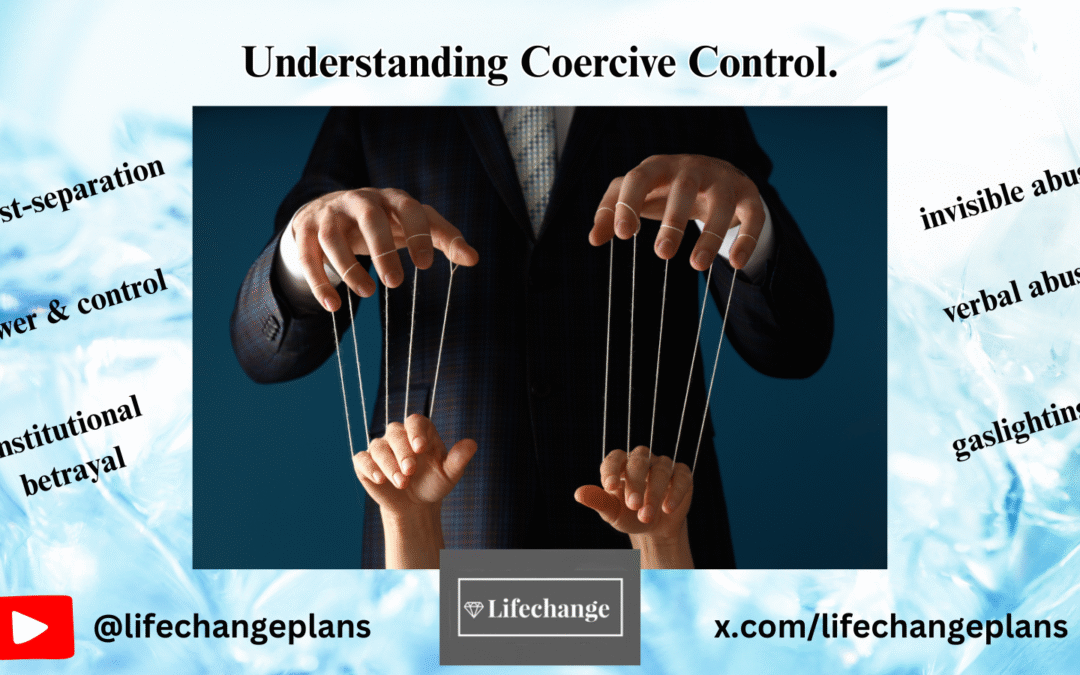Coercive Control
I have chosen two videos in this article that cover “Coercive Control”. Both are TEDx talks.
What is coercive control? Domestic abuse isn’t always physical. Coercive control is an act or a pattern of acts of assault, threats, humiliation, intimidation or other abuse that is used to harm, punish, or frighten the victim. Coercive and controlling behaviour is at the heart of domestic abuse.
This first video is from Christine Cocchiola’s TEDx talk, which discusses coercive control, explaining how it underlies various forms of abuse, not just physical violence.
Here is a summary of the video.
- Redefining Abuse: Abuse includes psychological tactics, sexual, financial, and legal abuse, and using children as weapons [01:08].
- Coercive Control: It’s about power and control, eroding a victim’s autonomy through manipulation, intimidation, and isolation [02:09].
- Historical Context: Feminist psychologists and researchers have contributed to understanding coercive control [03:04].
- Coercive Tactics: Tactics used to torture prisoners of war are similar to those used by abusers [03:59].
- Marie’s Story: A client’s experience illustrates how abuse can be covert, escalating post-separation [06:15].
- Systemic Issues: Systems often fail to recognize coercive control, leading to institutional betrayal [10:55].
- Impact on Victims: Victims may experience neurological responses like trauma bonding [09:46].
Call to Action: The talk advocates for systemic reforms and educating young people about healthy relationships [15:16].
Sabrina shares a personal story.
In this next TEDx talk, Sabrina Victoria, “Identifies Covert Forms of Violence: Coercive Control,” she discusses invisible abuse, also known as coercive control.
- Sabrina shares a personal story [00:17] to illustrate the nature of this abuse, highlighting the absence of physical violence [00:45] and the challenges of describing the trauma [03:49].
- She emphasizes that coercive control was only recently acknowledged, with the UK passing a law in 2015 [05:00] and California enacting Senate Bill 1141 in 2020 [05:14].
- The talk identifies three main points [05:38]:
- What invisible abuse looks and sounds like.
- Who it affects.
- The importance of creating change.
- Sabrina references Patricia Evans’ research on verbal abuse [06:01], explaining that abusers strategically use coercive control to gain dependency over their victims [06:28].
- She describes three techniques used by abusers [07:11]:
- The speaker uses a visual representation to explain how abusers build trust and then introduce abusive behaviors [08:31], leading to a cycle of abuse [10:20].
- She notes the biological impact on victims, leading to hypervigilance [11:11].
- Sabrina states that abuse does not discriminate [12:22], citing CDC data that shows a high prevalence of this form of abuse [12:29].
- She addresses the reasons why victims don’t leave [12:37], including fear, shame, and lack of awareness. Victims don’t even know it is abuse. [12:56].
- Sabrina shares her personal experience of leaving an abusive relationship [15:46] and emphasises the importance of setting boundaries [16:15].
- She concludes by highlighting three key words [16:34]:
- The speaker calls for workshops to educate professionals on coercive control [17:52] and urges listeners to believe victims [18:15].
Remaining In A Relationship After Infidelity
You might be interested in an article I first published in 2018 when my then-partner had “confessed” to cheating.
The title is 7 Stages To Rebuild Your Relationship.
In this article, I ask the question, “Why is he angry at me when he is the one who cheated?” Of course, this was before I understood any of the “verbal abuse” or the “devaluation” used in the cycle of abuse.
The article can still help anyone who wants to remain in the relationship after discovering infidelity. It is your individual decision on “Should I stay or should I go?” Something I also thought through during 2018, while trying to recover from the shock of his confession and the grief and trauma I experienced.

Other Resources.
I recommend several books that will help both victims and professionals educate themselves on the “hidden” forms of abuse. Visit My Book Shop Page
#CommissionsEarned
“As an Amazon Associate, I earn from qualifying purchases.”
Visit the website Verbalabuse.com


